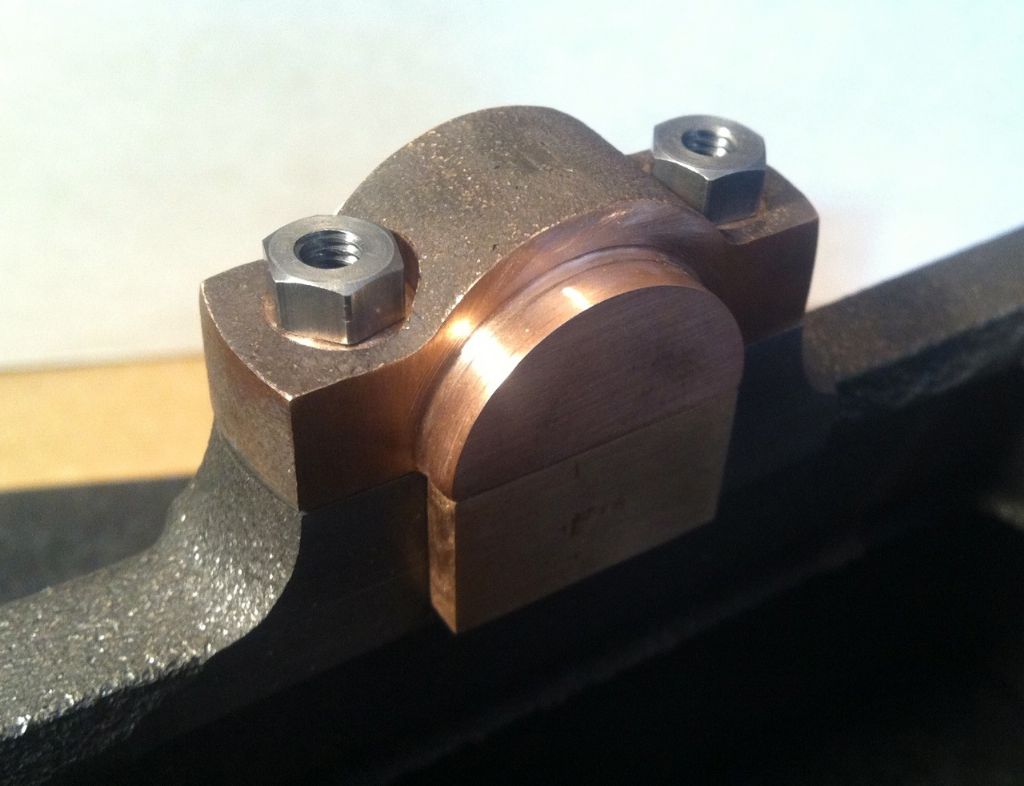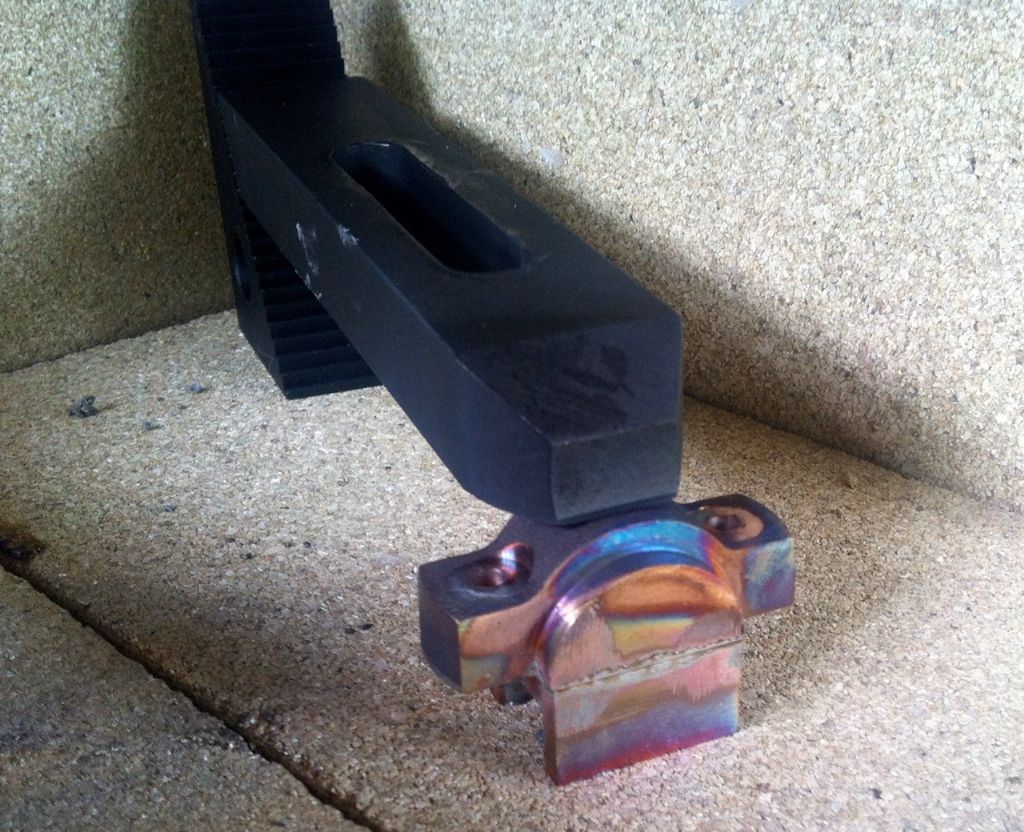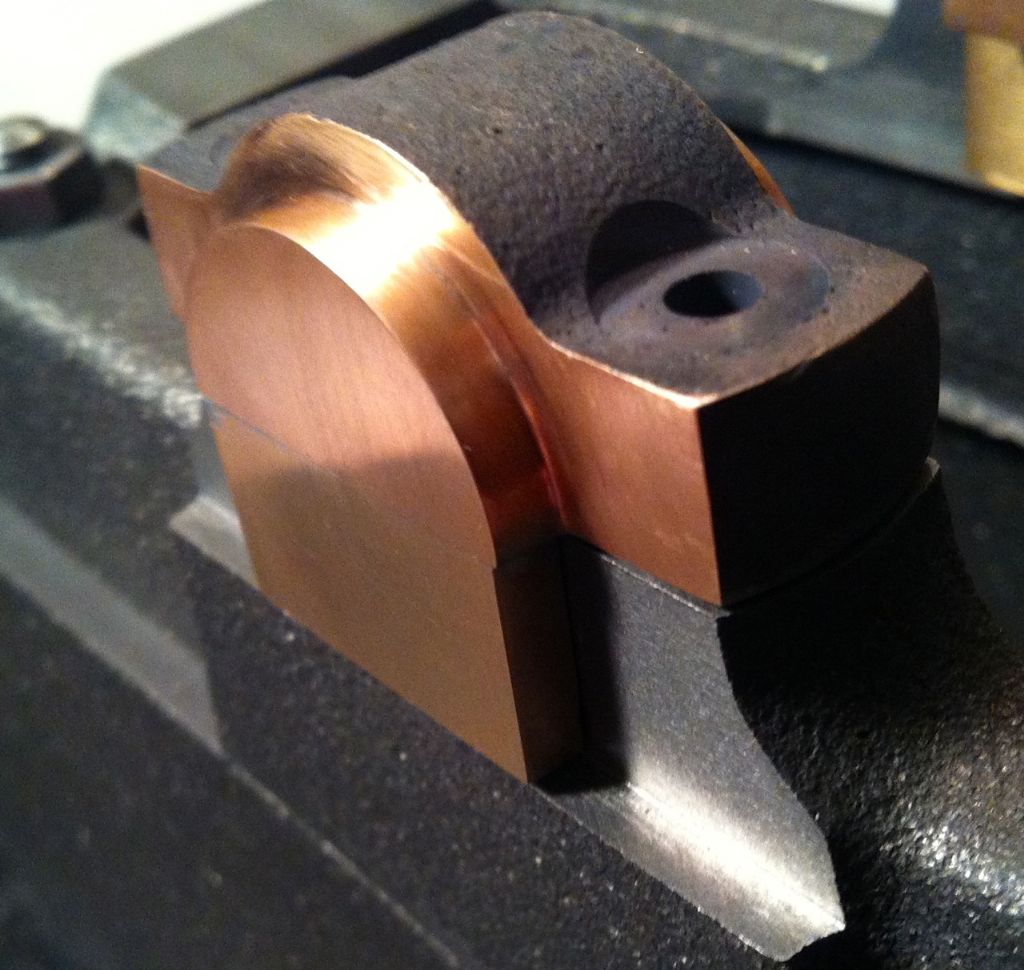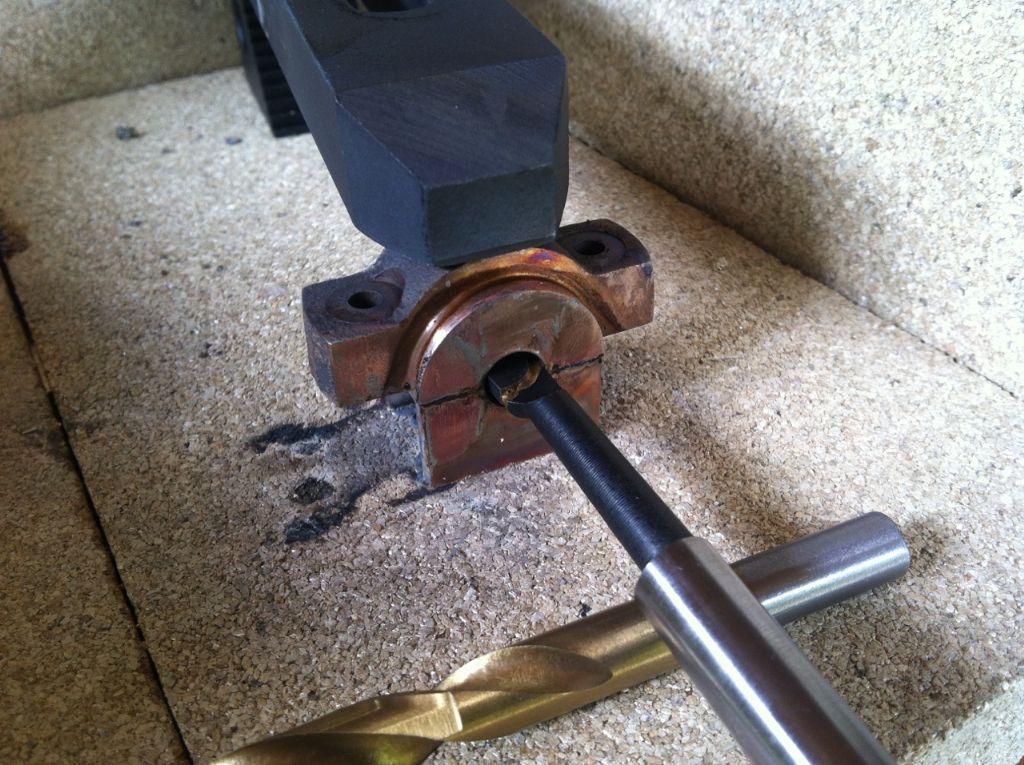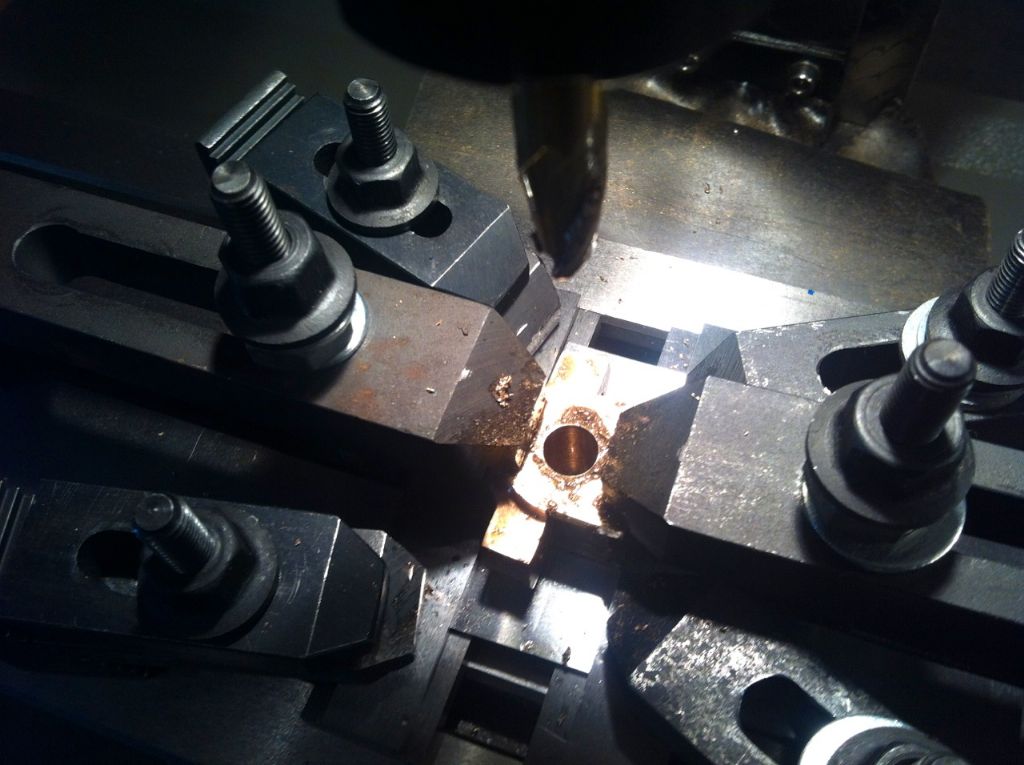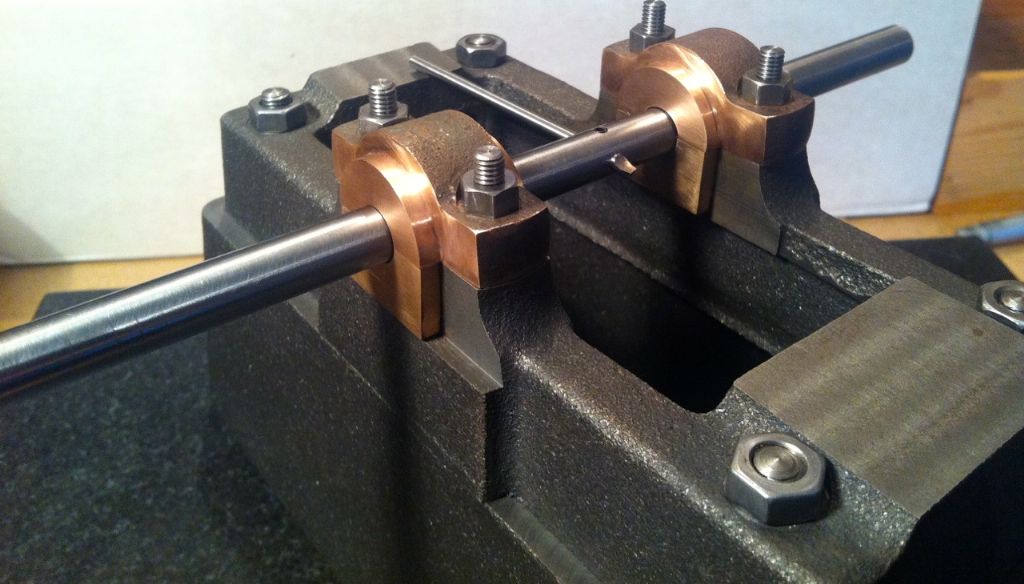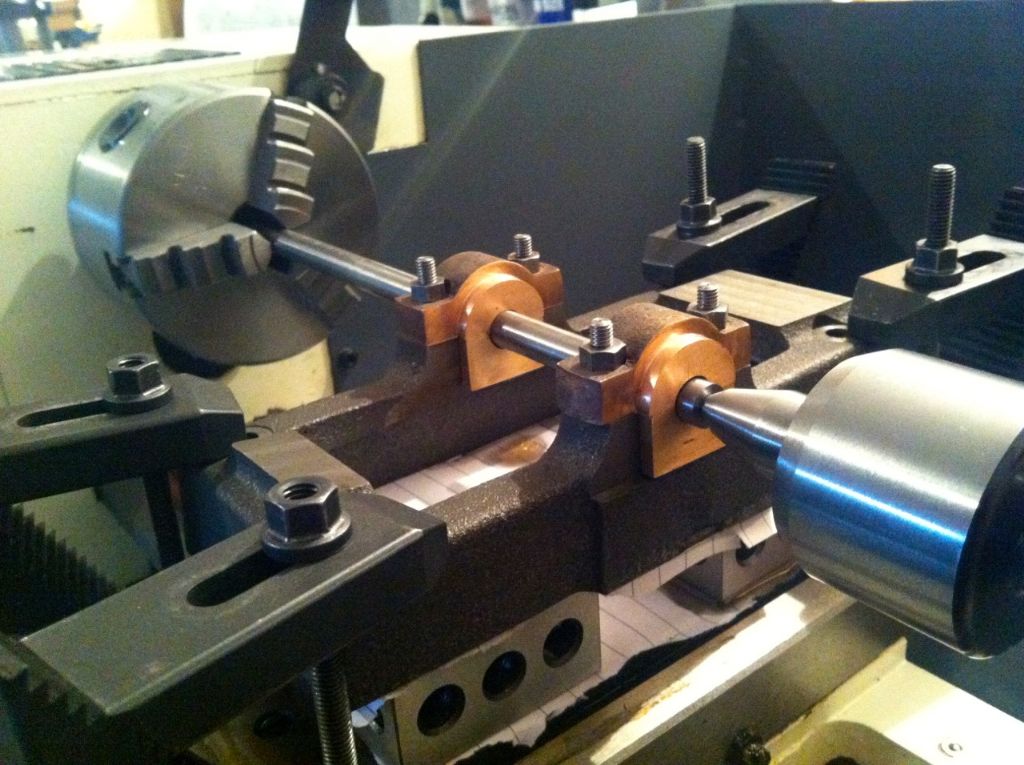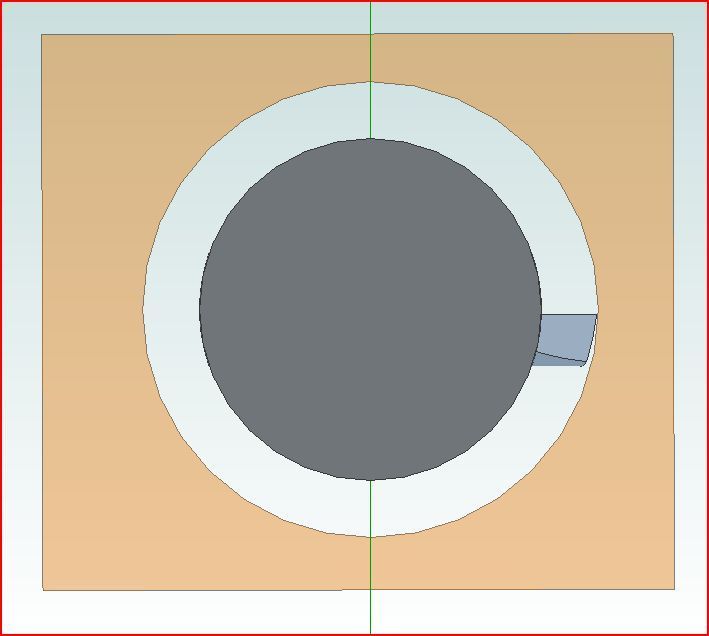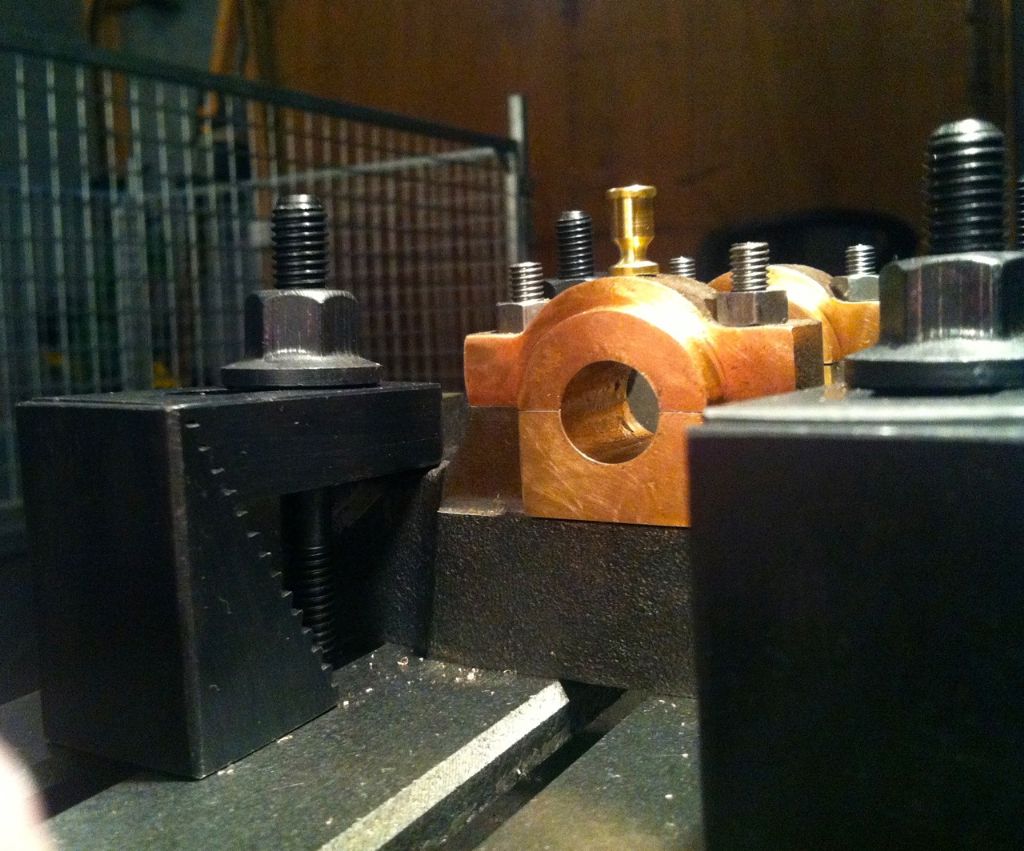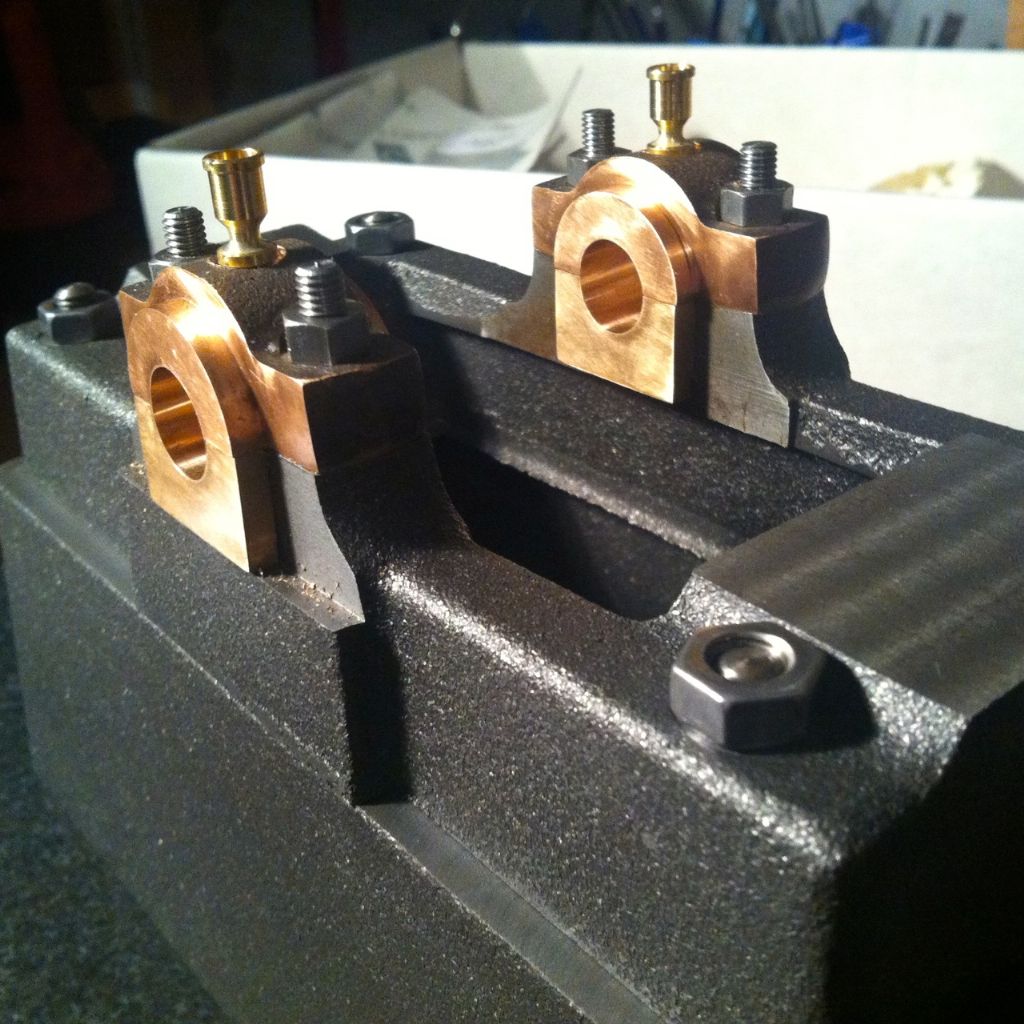Time to try and go forward again with another little update..
First a little video of first time using the between ctrs boring bar I made. This was the first pass in getting them lined up. The bearings look terrible in this but have been gradually been getting better with more time on them.. I think I may have had trouble doing this with a drill bit until they were both in line – at least on my little lathe anyway and especially with the Gunmetal. The videos not very good, taken again with the old iPhone..
Reaming the Bearings to 1/2 inch with the new 'chuck' reamer.

The Bore after reaming.
Drilling the Oil Holes on the Mill.
Showing the Oil Cups needed spot facing.
Spot Facing the oil cup holes.
The Oil Cup after Spot Facing – a slightly smaller cutter would have been better and a slightly deeper cut.
Both Oil Cups 1.
Both Oil Cups 2.
Both Oil Cups 3.
The bore after reaming 2.
Progress so far 1 – I've hardly started…
Progress so far 2 – I've hardly started…
The bearings are done now. There're not very pretty, but its been a great education. I think I went wrong in trying to use my basic vice to get the blocks to size, not knowing the vice wasn't up to it at the time especially with the Gunmetal. The initial blocks didn't end up square, there was pressure then from clamping, contributing to the solder joint failure – my theory anyway, but I'm pretty sure its not far off. However they may not look too good, but they should be perfectly in line, horizontal and the bores feel great – so should do the job..
I'm looking forward now to having a go at the Crankshaft. A first time at building completely from scratch – Victoria's were part cast..
Regards
Allan.
Edited By Allan. on 30/05/2014 17:26:50
Edited By JasonB on 30/05/2014 18:01:04
GarryC.




